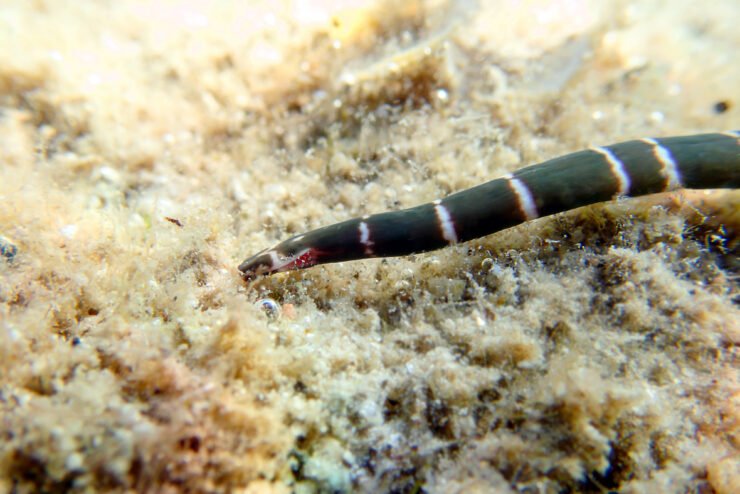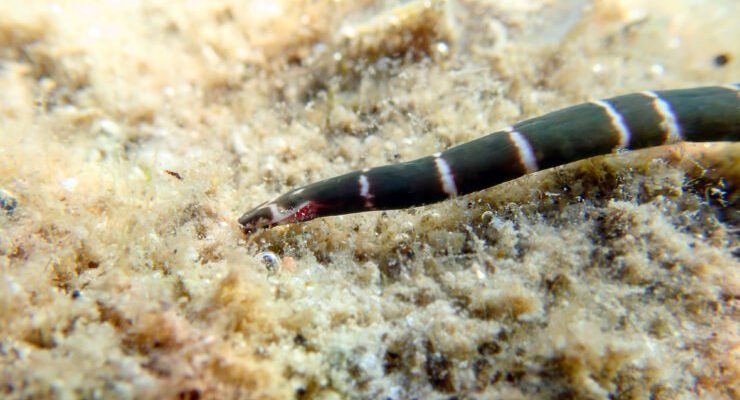
Now, you might be wondering if they can actually thrive in an aquarium setting. It’s not just about adding a quirky decoration; it’s about understanding their needs and whether you can provide a suitable habitat. So, let’s dive into the world of ribbon worms and find out if they can flourish in your tank.
What Are Ribbon Worms?
Ribbon worms are intriguing creatures that belong to a group of animals called nemerteans. They can range in size from just a few millimeters to over 30 meters long in some species! You might say they’re the “spaghetti” of the ocean—long, thin, and quite flexible. These worms have a unique feature called a proboscis, which they can extend to capture prey, just like a tongue flicking out to grab food. This can make them exceptional hunters in their natural habitats.
Typically found in marine environments, ribbon worms can be spotted in a variety of places, including sandy bottoms and rocky shores. They thrive in saltwater ecosystems, and their innate beauty and bizarre behavior captivate many marine enthusiasts. However, this doesn’t mean they are an ideal addition to every aquarium setup.
Can They Survive in Aquariums?
Here’s the thing: ribbon worms are not your traditional aquarium residents. While they can survive in aquariums, it’s essential to consider their specific needs and behaviors. They require a carefully controlled environment to thrive. If you’re thinking about adding ribbon worms to your tank, you’ll need to pay attention to several factors, including water quality, temperature, and food sources.
Ribbon worms are sensitive to changes in water parameters. They thrive in clear, well-oxygenated saltwater with stable salinity levels. It’s important to maintain these conditions consistently. A tank that mimics their natural habitat—with plenty of hiding spots and substrates for burrowing—will give them a better chance for survival.
Setting Up an Aquarium for Ribbon Worms
If you’re serious about keeping ribbon worms in your aquarium, the setup is crucial. Here are some key elements to consider:
- Tank Size: A larger tank (at least 50 gallons) is ideal to create a balanced ecosystem.
- Substrate: Use sandy substrates that allow for burrowing and mimic their natural habitat.
- Filtration: Invest in a good filtration system to keep the water clean and well-aerated.
- Temperature: Maintain a stable temperature between 20°C to 25°C (68°F to 77°F) for optimal health.
In addition to the basic setup, you’ll want to provide ample hiding places. Use rocks, caves, and even PVC pipes to create an environment where they can feel safe. Remember, these worms like to hide away from potential threats, so consider their natural instincts when designing their space.
Feeding Ribbon Worms
Feeding ribbon worms can be a bit of a challenge, especially if you’re used to more straightforward aquarium species. They are carnivorous and primarily feed on small invertebrates, including tiny crustaceans and polychaete worms. You might consider offering live food like brine shrimp or small bits of fish, but keep in mind their feeding habits can be quite different from what you might expect.
Here’s how you can approach feeding them:
- Live Food: Offer small live prey that they can capture with their proboscis.
- Frequency: Feed them every few days to ensure they get enough nutrients without overfeeding, which can contaminate the tank.
- Observe Their Behavior: Watch how they react to food. This will tell you if they’re hungry or stressed.
In essence, balancing their diet can help keep ribbon worms healthy and active in your aquarium.
Potential Challenges with Ribbon Worms
It’s important to acknowledge that keeping ribbon worms isn’t without its challenges. While they can survive, they may not thrive in a standard aquarium setup. Here are a few common issues you might encounter:
- Compatibility: Ribbon worms may not coexist well with other tank mates due to their predatory nature.
- Sensitivity: They are quite sensitive to changes in water quality, which can impact their health.
- Burrowing Behavior: If they feel threatened, they may burrow into the substrate, making them hard to spot and monitor.
All in all, keeping ribbon worms requires some extra attention and care. If you’re ready to give it a go, you’ll need to stay observant and proactive in maintaining their environment.
So, can ribbon worms survive in aquariums? The answer is yes, but with a solid understanding of their unique needs. They require a carefully curated environment, the right food, and attention to their behavior. If you’re up for a little adventure in marine life, ribbon worms can add an exciting dynamic to your aquarium experience. Just remember, they’re not your average pet fish. If you embrace the challenge and set up an aquarium tailored to their needs, you might just find these fascinating creatures to be a rewarding addition to your aquatic world.

